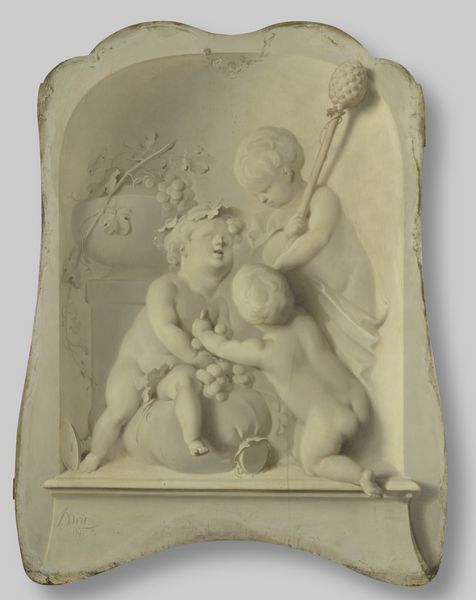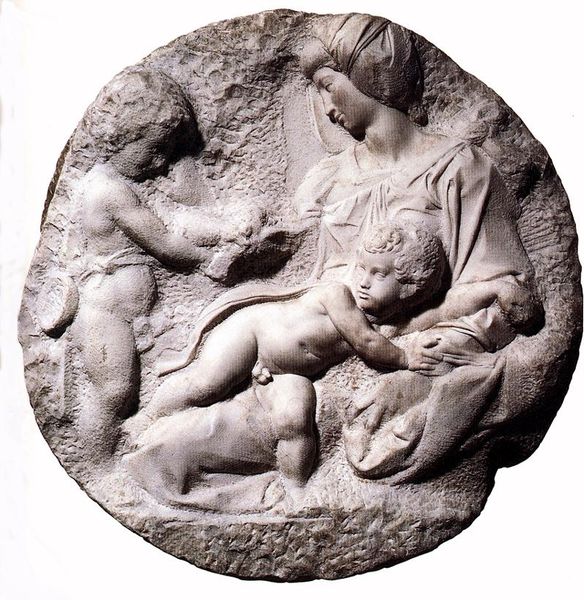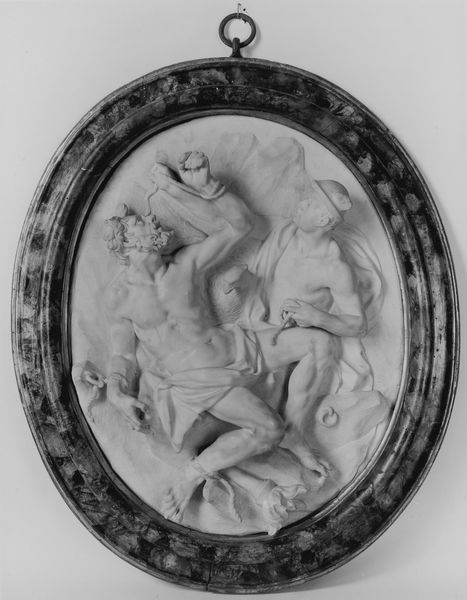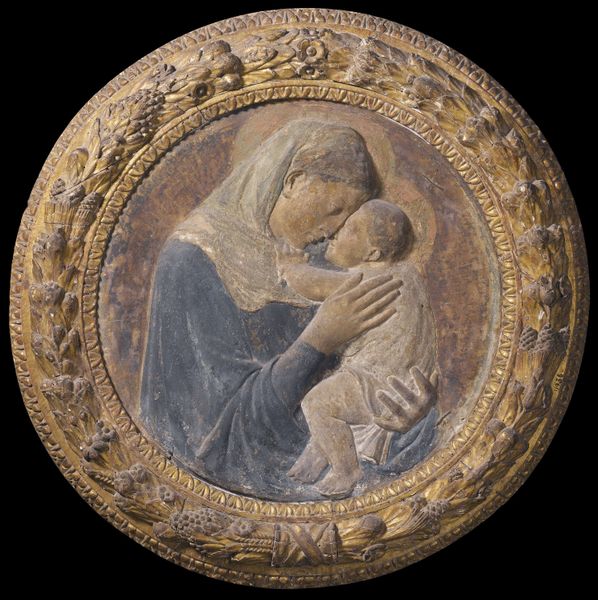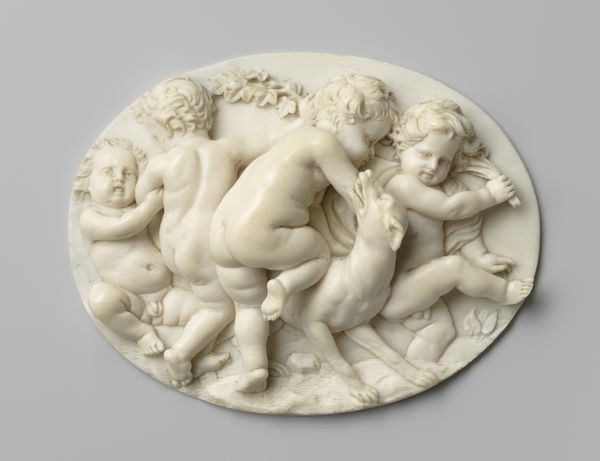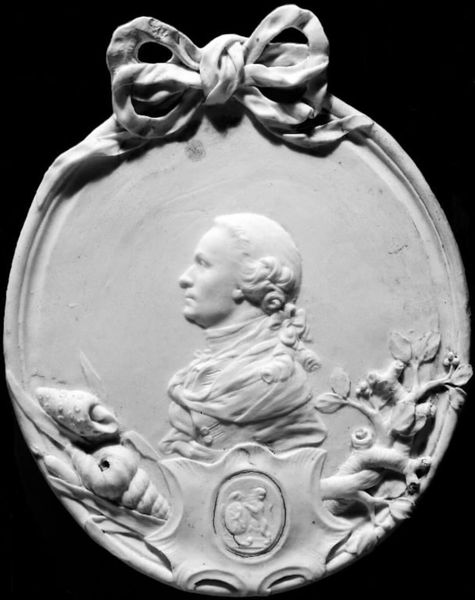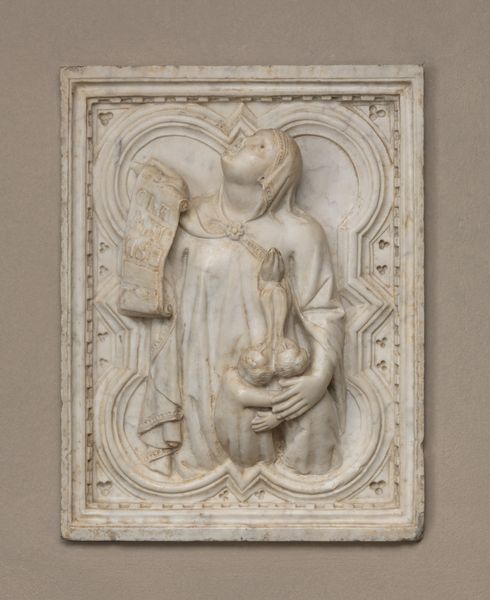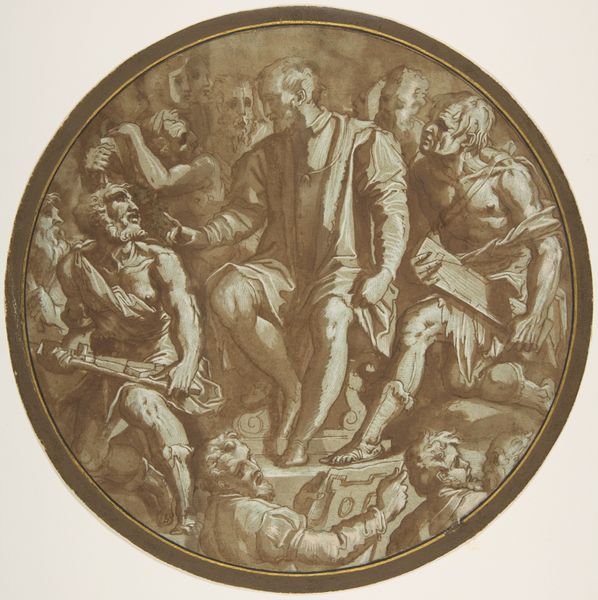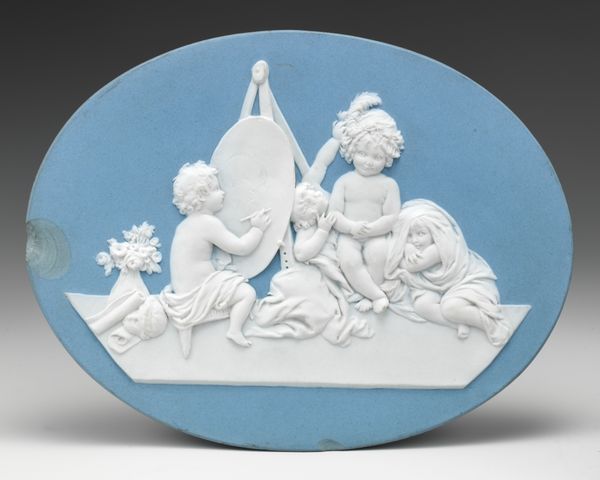
relief, sculpture, plaster
#
portrait
#
stone
#
sculpture
#
relief
#
figuration
#
sculpture
#
plaster
#
academic-art
#
decorative-art
#
rococo
#
statue
Dimensions: height 101 cm, width 98 cm, depth 5.5 cm
Copyright: Rijks Museum: Open Domain
Jacob de Wit created ‘Winter’ with oil on canvas to mimic the look of a plaster relief. The artist, active in the 18th century, specialized in these kinds of trompe l'oeil or "fool the eye" paintings. Look closely, and you'll see he has rendered the cherubic figures in monochrome, with careful gradations of light and shadow. This reinforces the illusion of three-dimensionality that would normally be created by a sculptor. These paintings would have been embedded into the architecture of wealthy people's homes, giving the impression of classical sculpture at a fraction of the cost. Think of it: rather than expensive marble, and the skilled labor to carve it, you could have a painter achieve a similar effect. So, while De Wit was clearly a highly talented artist, we also see the influence of a burgeoning consumer society at play in this charming image. By understanding how materials and processes intersect, we gain insight into broader social and economic dynamics, blurring the lines between fine art and craft.
Comments
rijksmuseum about 2 years ago
⋮
Jacob de Wit painted this overdoor, an allegory of Winter, for the house of Cornelis Hop, who later became burgomaster of Amsterdam. Summer and Autumn are also on view in this room. With smoothly executed scenes in white and grey paint (grisailles), De Wit emulated stucco or marble reliefs, thereby imitating sculpture. In Dutch these kinds of paintings were called ‘witjes’, a play on the artist’s surname, Wit (Dutch: ‘white’).
Join the conversation
Join millions of artists and users on Artera today and experience the ultimate creative platform.
